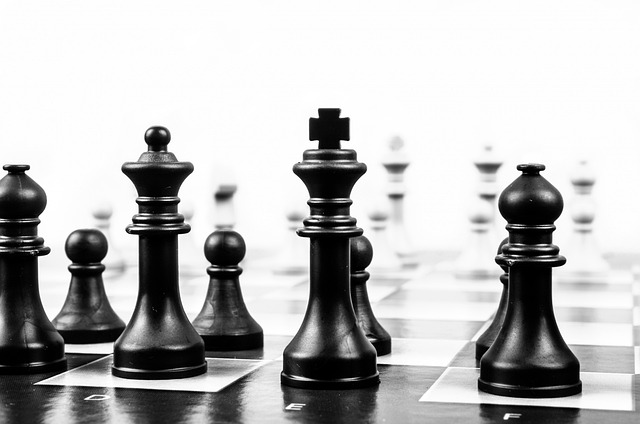The Role of Visualization in Achieving Personal Goals
In the realm of personal development, visualization plays a crucial role in helping individuals achieve their goals. This powerful technique goes beyond mere daydreaming; it involves creating detailed mental images of the desired outcomes you wish to manifest in your life. Visualization taps into the mind’s ability to simulate experiences, allowing you to explore your aspirations in vivid detail. When you see these goals clearly in your mind, it can ignite a profound motivation to work towards them. This connection between seeing and achieving is backed by both psychological studies and real-world success stories.
Moreover, visualization is often associated with sports psychology. Athletes frequently utilize this technique to enhance their performance. By mentally rehearsing their routines, they prepare themselves for the physical execution of skills. From visualizing crossing the finish line first to picturing themselves making a flawless presentation, athletes recognize the power of a well-defined mental picture. By employing visualization, they not only boost their confidence but also engage their subconscious mind, which contributes significantly to their preparedness and success.
But how does visualization actually work? At a basic level, our brains cannot distinguish between a real experience and a vividly imagined one. When you visualize success, your brain activates the same neural patterns as if you were experiencing it in reality. This process enhances your understanding of the skills necessary to attain your goals and encourages you to make decisions that align with these imagined successes. In essence, by regularly visualizing your goals, you train your brain to recognize opportunities and take actions that lead to their fulfillment.
The Process of Visualization
To effectively use visualization for achieving goals, you must approach it systematically. First, clearly define your goals. They need to be specific, measurable, achievable, relevant, and time-bound (SMART). Identify what you truly want to achieve. Next, create a mental image of that goal as if you have already achieved it. This image should incorporate as many senses as possible; imagine the colors, sounds, and even the emotions associated with your success. The more detailed your mental picture, the more powerful your visualization will be.
Once you have crafted your vivid images, practice regularly. Set aside time each day to engage in visualization exercises. This could be as simple as closing your eyes and focusing on your breath for a few moments. Afterward, bring your goal to mind with all the sensory details you’ve created. Spend time immersing yourself in this experience, evoking feelings of joy and excitement that accompany achieving your goal. The key is consistency; over time, your brain will become wired to recognize these goals as not just dreams, but tangible realities you are working towards.
In addition to regular practice, consider incorporating affirmations into your visualization routine. Affirmations are positive statements that reinforce your belief in your ability to achieve goals. By pairing affirmations with visualization, you align your thoughts with your feelings and aspirations. This holistic approach strengthens your mental resilience and increases your likelihood of success. When you believe you can achieve something and visualize it, you take steps that align with that belief. This synergy fuels your personal development and propels you forward.
Visualization Techniques
There are various visualization techniques you can explore to enhance your goal-setting and achievement process. One popular method is the ‘Vision Board’. A vision board is a collage of images and words that represent your goals. By creating a physical representation of your aspirations, you not only clarify what you want but also have a daily visual reminder to keep you motivated. Place your vision board somewhere you will see it regularly, and allow the images to evoke the feelings associated with achieving those goals.
Another effective technique is guided imagery. This involves listening to recordings that lead you through a series of visualizations. Guided imagery can be particularly helpful for those who may struggle with creating their own mental images. Many resources are available online, from apps to podcasts, that offer guided sessions tailored to various goals, including personal development. As you listen, focus intently on the imagery presented, allowing yourself to feel fully engaged with the process.
Finally, you can use journaling as a complementary visualization tool. By writing down your goals, the steps needed to achieve them, and reflecting on the feelings associated with those accomplishments, you create a deeper connection with your aspirations. Journaling allows you to clarify your thoughts and feelings, serving as a bridge between visualization and actionable steps. Through a combination of writing and imagery, you empower your personal development journey and stay aligned with your objectives.
The Psychological Benefits of Visualization
Beyond mere motivation, visualization offers several psychological benefits that contribute to achieving personal goals. Engaging in visualization exercises can reduce anxiety and enhance performance. When you visualize yourself succeeding, you condition your mind to focus on positive outcomes rather than potential failures. This shift in mindset fosters resilience, enabling you to approach challenges with confidence. It’s fascinating how simply envisioning success can lead to more profound changes in behavior and thought patterns.
Furthermore, visualization can significantly improve self-discipline. By regularly picturing your goals, you create a mental framework that makes it easier to prioritize tasks and manage distractions. When obstacles arise, your visualizations serve as a reminder of the bigger picture, urging you to stay on track. This enhanced focus leads to better decision-making and increased commitment to your personal development goals.
Additionally, the emotional benefits of visualization cannot be overlooked. Visualizing success can evoke feelings of pride, accomplishment, and happiness. These emotions have a motivational ripple effect; they inspire you to take action and persist even when faced with difficulties. The power of positive emotions entrenched in visualization goes beyond temporary mood boosts. It fosters a lasting belief in your capabilities, ultimately shaping your personal development journey.
Common Misconceptions About Visualization
Despite its effectiveness, there are some misconceptions surrounding visualization that can hinder its utilization. One popular myth suggests that simply imagining success will automatically lead to achievement. While visualization is a powerful tool, it acts as a catalyst for action rather than a replacement for it. Visualizing alone won’t yield results; you still have to complement this practice with concrete actions and planning.
Another common misconception is that visualization requires extraordinary imagination or talent. The truth is that anyone can practice visualization. It does not demand artistic skills or elaborate creativity. All it requires is a willingness to focus your thoughts and engage your mind actively. Even if your initial attempts feel vague or hazy, with practice, they will become clearer and more impactful.
Lastly, some believe that visualization can only be beneficial for certain aspects of life, such as sports or business. In reality, visualization is a versatile technique applicable to all areas of personal development, from health and relationships to career goals and financial aspirations. Embrace the idea that this skill can enhance any aspect of your life, creating a positive ripple effect on overall well-being and success.
Visualization and Personal Development: The Bigger Picture
As we delve deeper into the connection between visualization and personal development, it’s essential to recognize that this technique integrates well with other personal growth strategies. By combining visualization with goal-setting, mindfulness, and positive affirmations, you create a robust framework for achieving your aspirations. Visualization places you in the driver’s seat of your life, empowering you to create pathways toward your goals while simultaneously enhancing your emotional and mental well-being.
It also plays an instrumental role in enhancing self-awareness. When you visualize your goals and the journey toward them, you develop a clearer understanding of what drives you and what holds you back. This self-awareness is a crucial component of personal development, as it enables you to make informed decisions and adjustments along the way. With greater awareness, you can identify limiting beliefs and restructure them into empowering thoughts that aid your progress.
In a world that often presents obstacles and challenges, visualization offers a beacon of hope and clarity. It reminds us that, while external circumstances may change, the way we perceive our goals and the mindset we adopt can drive significant change. Incorporating visualization into your daily routine reinforces a sense of personal agency, cultivating resilience and motivating you to forge ahead in your quest for self-improvement. Embrace this journey, as visualization stands as a powerful ally in the realm of personal development.
FAQs about Visualization and Achieving Goals
- 1. How often should I practice visualization for it to be effective?
- To see significant benefits, try to practice visualization daily. Spending just 10-15 minutes each day can help reinforce your mental images and keep your goals at the forefront of your mind.
- 2. Can visualization help with overcoming fear or anxiety about achieving goals?
- Absolutely! Visualization can help reduce anxiety by allowing you to mentally rehearse success and becoming familiar with the experience. By visualizing positive outcomes, you can replace fear with confidence.
- 3. Is visualization suitable for all types of goals?
- Yes! Visualization is versatile and can be applied to various types of goals, whether they involve health, career, relationships, or personal growth. It can enhance your focus and commitment to any aspiration.
- 4. How can I measure the effectiveness of my visualization practice?
- While visualization’s impact may be subjective, you can measure its effectiveness by tracking your progress toward your goals over time. Notice if you feel more motivated, focused, or capable of taking action towards your aspirations.
- 5. What should I do if I find it difficult to visualize clearly?
- Start with guided imagery exercises or consider using tools like vision boards. Be patient with yourself, and practice regularly to improve your visualization skills. Clarity will develop over time with consistent effort.



